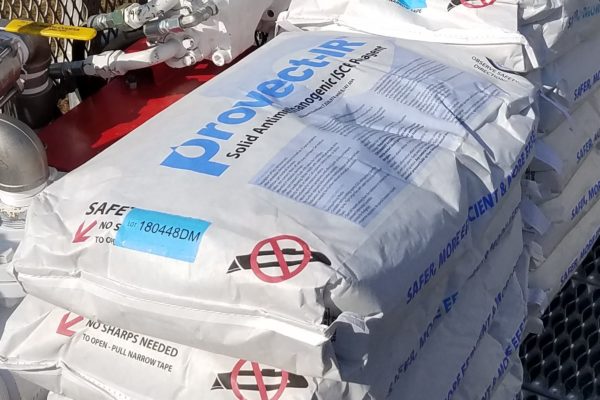Antimethanogenic ISCR Reagent for Improved Heavy Metal Immobilization
Third International Symposium on Bioremediation and Sustainable Environmental Technologies May 18-21, 2015 Miami, Florida
By Bernd Rehm (ReSolution Partners, LLC), Janet Peterson (Bureau Veritas North America, Inc.), and Jim Mueller (Provectus Environmental Products, Inc.)
Background/Objectives: Trace metals constitute a significant class of groundwater contaminant, originating from mining effluents, industrial solid waste and wastewater, landfill leachate, agricultural wastes and fertilizers, and fossil fuels. Conventional reagents for In Situ Chemical Reduction (ISCR) developed over a decade ago make use of synergistic interactions between various biotic and abiotic processes to encourage dehalogenation of organic compounds as well as reductive precipitation of various heavy metals. These common ISCR amendments have been modified to include (when needed): a source of sulfur, (powdered activated carbon (PAC)/charcoal, buffering agents, and/or other additives to further encourage the immobilization of heavy metals. Despite these efforts, ISCR processes are often confronted by an inability to meet stringent regulatory requirements, especially for arsenic (MCL < 10 ppb in water intended for human consumption). One likely explanation for this phenomenon is that, with the possible exception of lead, almost all Group IV, V and VI elements can be biomethylated. These methylmetal(loids) are usually volatile and more toxic than their inorganic counterparts due to increased water solubility and hydrophobicity. For example, methylmercury is one of the most potent toxins known to man. Hence, the biosynthesis of organo-metals as a potential by-product of conventional ISCR treatment is likely a factor contributing to the difficulty associated with meeting remedial action objectives. It is known that microorganisms are primarily responsible for the biosynthesis of organo-metals (Challenger, 1945), and that the activity of methanogens (directly and/or indirectly) is a main source of their production.
Approach/Activities: We supplemented a modified ISCR Reagent with a source of Monacolin K and other natural statins to inhibit the growth and proliferation of Archaea i.e., methanogens in soil and groundwater from a site where the generation of methylated arsenic species is suspected to have occurred. In theory, this should reduce the biosynthesis of highly toxic, mobile methylated arsenic species. The soil and groundwater samples were from a golf course maintenance area in south Florida where groundwater arsenic impacts were partially mitigated following multiple applications of ERD (lecithin) and conventional/modified ISCR amendments (EHC® and EHC-M™), with persistent dissolved phase organic arsenic. Inhibiting methylation allows inorganic metal species to be more quickly sequestered for safe, long-term, stable immobilization via adsorption and precipitation reactions. In addition methane inhibition mitigates the safety issues associated with elevated methane in groundwater, soil gas, and indoor air, the antimethanogens also promote more efficient use of the hydrogen donor yielding more cost-efficient remedial actions. Moreover, the overall toxicity of the site is not increased via the generation of methylmetal(loids) as a consequence of the treatment process.
Results/Lessons Learned: The presentation will provide insight into the treatment of heavy metals in an antimethanogenic ISCR zone. Using arsenic as example, reduced organic (methyl) arsenic production should allow arsenate [As(V)] anions to be more effectively reduced to arsenite [As(III)] and sequestered as solid arsenic species by means of reductive precipitation and adsorption onto the iron corrosion products. Practical information on installation, geotechnical properties, handling and quality control aspects of the remedial amendments will be reviewed, together with cost and performance data.
Proposed Session: Bioremediation Technologies and Implementation Practices: Session 1i (4e, 2d) – Engineering biogeochemical transformation
Corresponding Author:
Bernd Rehm [email protected] Resolution Partners, LLC. 967 Jonathon Drive Madison, WI 53713 (608) 669-1248
Co-Authors:
Jim Mueller [email protected] Provectus Environmental Products, Inc. 2871 West Forest Rd, Suite 2 Freeport, IL 61032 Phone: (815) 650-2230
Janet M. Peterson, P.G. [email protected] Bureau Veritas North America, Inc. Health, Safety and Environmental Services 8175 Northwest 12th Street, Suite 110, Miami, Florida 33126-1828 Phone: (305)436-1221

